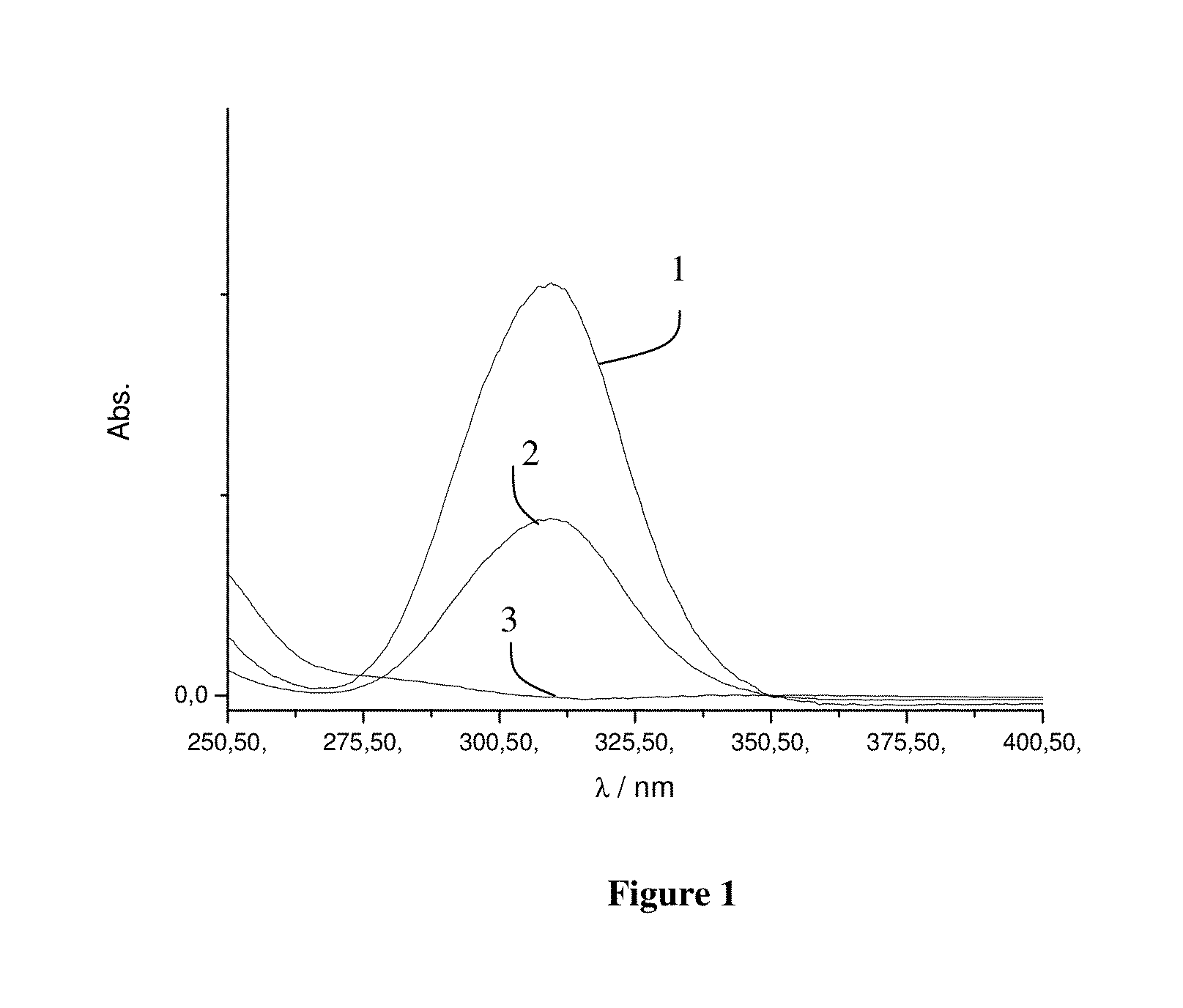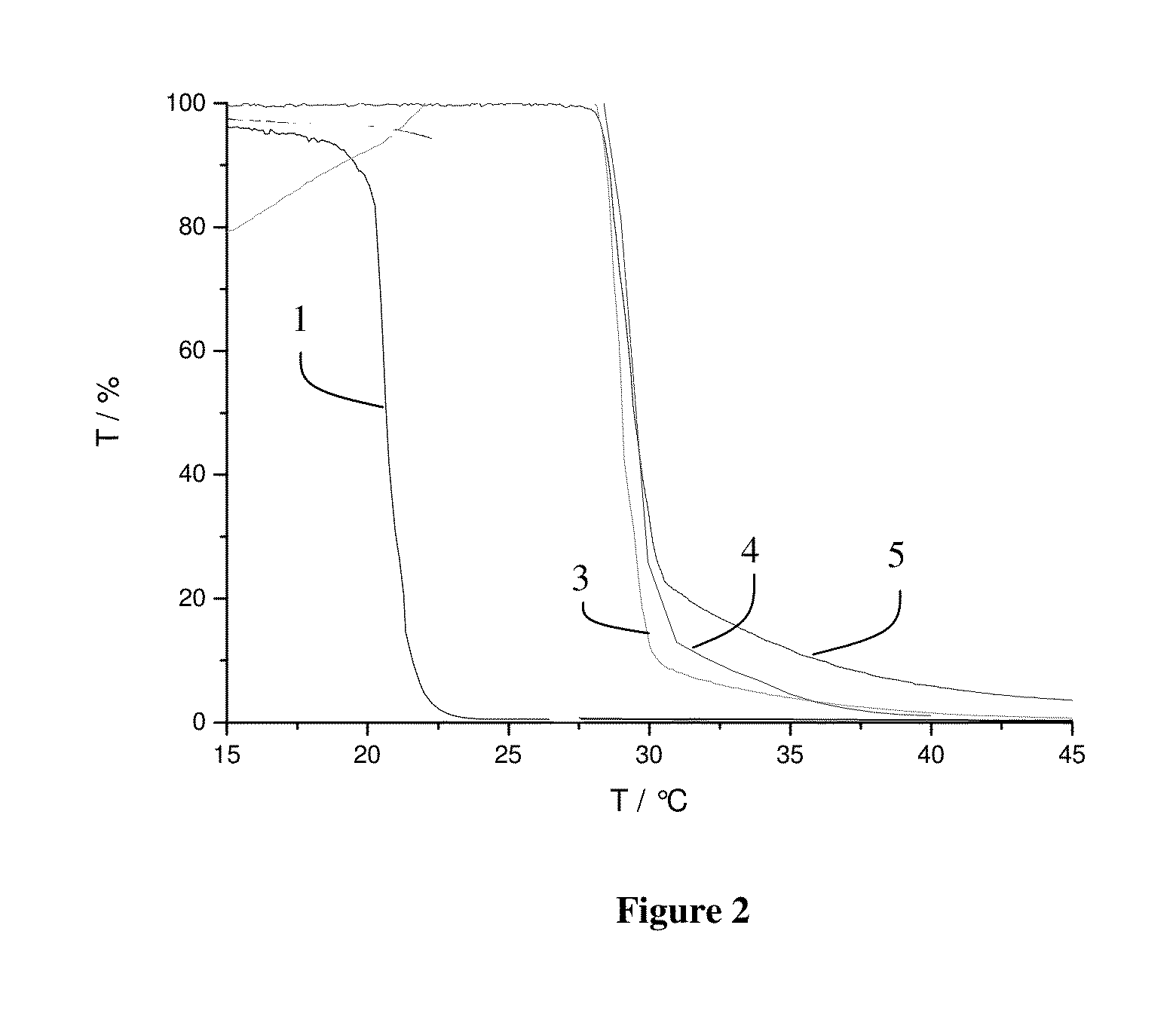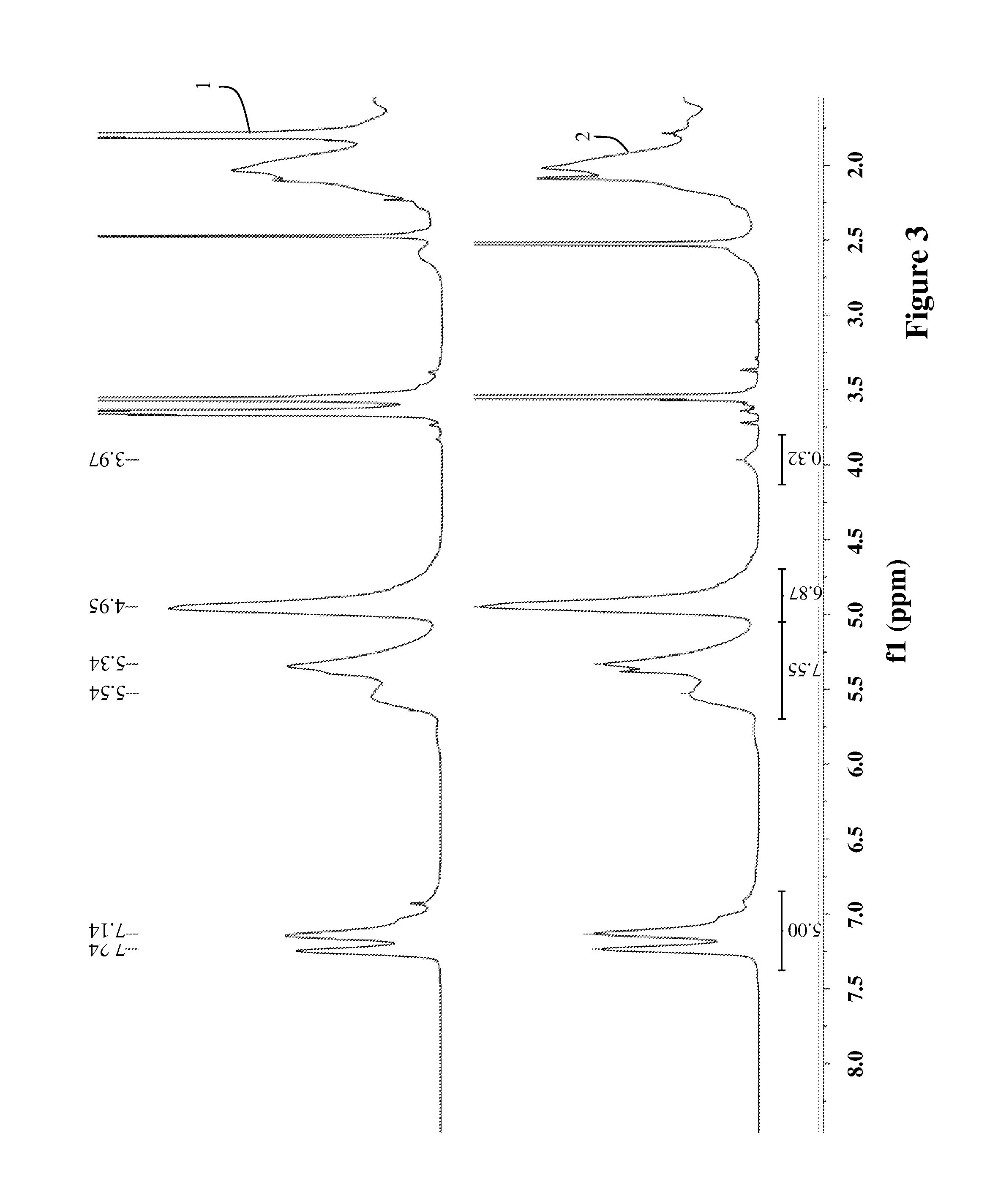Pneumatic tire
a technology of pneumatic tires and tires, applied in the field of pneumatic tires, can solve the problems of polymer precipitation from solution, performance and/or tread wear compromise, and/or the collapse of the polymer coil
- Summary
- Abstract
- Description
- Claims
- Application Information
AI Technical Summary
Benefits of technology
Problems solved by technology
Method used
Image
Examples
example 1
[0088]In this example, preparation of poly-(N-isopropylacrylamide), or PNIPAM, is illustrated.
[0089]RAFT-polymerization was used for the preparation of PNIPAM. For this purpose the following chain transfer agent (CTA) were prepared: 4-Cyano-4-dodecylsulfanylthiocarbonylsulfanyl-4-methyl butyric acid (CDSMB).
[0090]
The RAFT reaction scheme is as follows:
[0091]
Synthesis of Chain Transfer Agent (CDSMB)
[0092]4-Cyano-4-dodecylsulfanylthiocarbonylsulfanyl-4-methyl butyric acid was synthesized in two steps. The first step was prepared using literature procedure [W. G. Weber, J. B. McLeary, R. D. Sanderson, Tetrahedron Lett. 2006, 47, 4771.].
Step 1: Bis-(dodecylsulfanylthiocarbonyl)disulfid
[0093]Yield: 72%
[0094]1H-NMR (CDCl3 / 300 MHz): δ[ppm]: 0.86 (t, 6H); 1.11-1.43 (m, 36H); 1.65 (q, 4H); 2.66 (t, 4H)
Step 2: 4-Cyano-4-dodecylsulfanylthiocarbonylsulfanyl-4-methyl butyric acid
[0095]10 g of Bis-(dodecylsulfanylthiocarbonyl)disulfide and 7,7 g of 4,4′-azobis(4-cyano)pentaneacid were dissolved i...
example 2
[0104]In this example, functionalization of a styrene-butadiene rubber with PNIPAM is illustrated.
Synthesis of Functionalized Rubber Elastomers
[0105]Functionalized elastomer was produced using the following general procedure: A solution of SBR, AIBN and the thiol-functionalized PNIPAM from Example 1 in dry THF was degassed under argon atmosphere at room temperature for 2 hours. The exact amount of educts for each reaction is shown in Table 3. The reaction mixture was then placed in a preheated oil bath at 70° C. for at least 20 hours. To make sure that no free thiol was in the reaction product, the product was dialyzed against THF for three days. After the dialysis the solvent was evaporated and the product was dried under vacuum. The results of the elementary analysis of three functionalized elastomers are shown in Table 4, with the calculated weight percent of PNIPAM in the resulting fucntionalized SBR.
[0106]The 1H-NMR spectrum of the SBR (1) and of the functionalized rubber (2) a...
example 3
[0109]In this example, the effect of PNIPAM-functionalization on the wettability of a styrene-butadiene rubber is illustrated. Wettability of the functionalized SBR was determined by measuring the contact angle of water droplets on a glass plate coated with the functionalized polymer.
[0110]Contact angle was measured following the procedure. The functionalized SBR samples were dissolved in THF and spin-coated on a glass slide. After drying in vacuum the slides were placed under a needle and a water droplet was purged out of the needle onto the coated glass. The contact angle was determined by measurement of the inner angle between the droplet and the glass surface. Contact angle was measured for each of the series of functionalized SBR at two temperatures, 22° C. and 45° C. These temperatures were chosen as being well below and above the 32° C. LCST for PNIPAM. The samples used corresponded to SBR3, SBR4, SBR5 and SBR2.
[0111]FIG. 5 shows the measured contact angle as a function of PN...
PUM
| Property | Measurement | Unit |
|---|---|---|
| temperature | aaaaa | aaaaa |
| weight percent | aaaaa | aaaaa |
| LCST transition | aaaaa | aaaaa |
Abstract
Description
Claims
Application Information
 Login to View More
Login to View More - R&D
- Intellectual Property
- Life Sciences
- Materials
- Tech Scout
- Unparalleled Data Quality
- Higher Quality Content
- 60% Fewer Hallucinations
Browse by: Latest US Patents, China's latest patents, Technical Efficacy Thesaurus, Application Domain, Technology Topic, Popular Technical Reports.
© 2025 PatSnap. All rights reserved.Legal|Privacy policy|Modern Slavery Act Transparency Statement|Sitemap|About US| Contact US: help@patsnap.com



